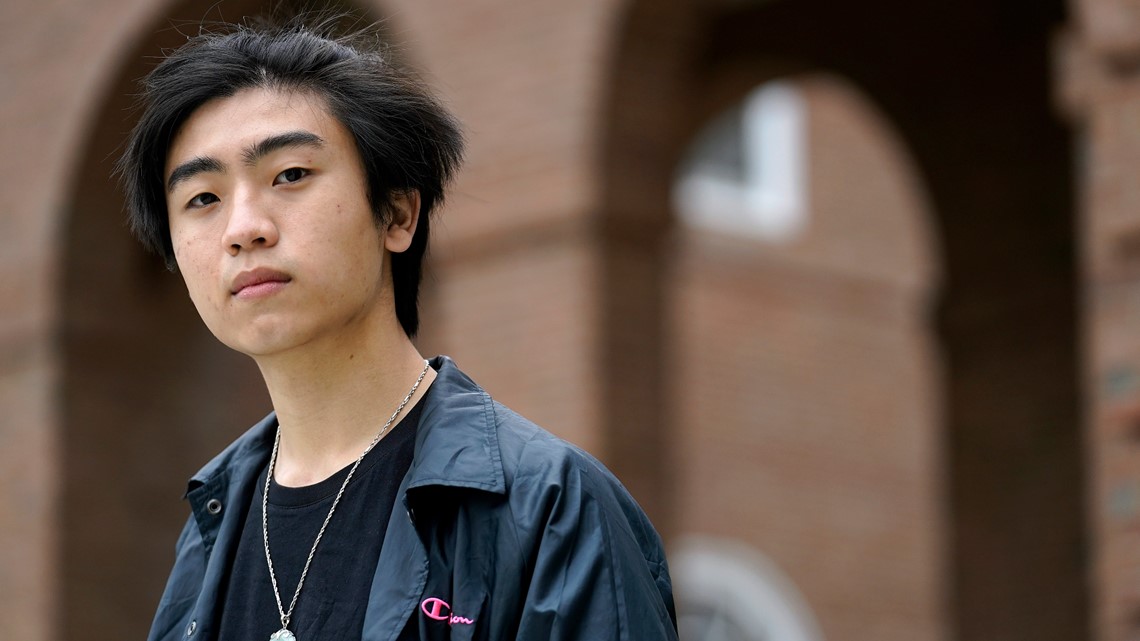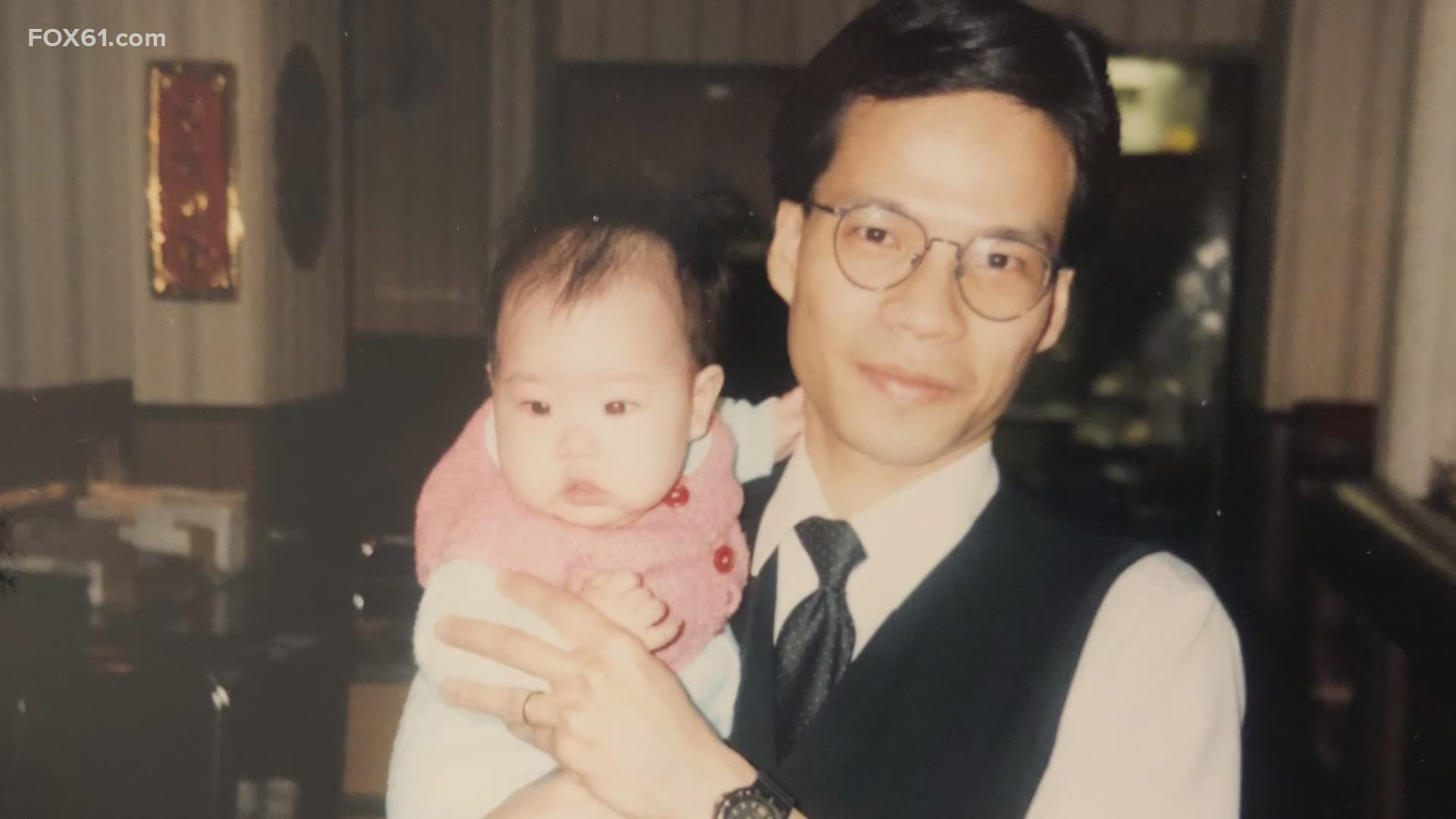WASHINGTON — As Dartmouth College sophomore Nicholas Sugiarto flipped through the course catalog last semester, two words caught his eye: “Asian American.”
The 19-year-old Chinese Indonesian American didn't know Asian American-focused classes were even an option at the Hanover, New Hampshire, campus. The biomedical-engineering major ended up enrolling in “Gender and Sexuality in Asian American Literature" and now wishes he could minor in Asian American studies.
“I never realized how long and storied the history of Asians in America has been,” Sugiarto said. “You also hear about stories that just never made the news or never made it into the standard AP U.S. history textbooks.”
That feeling of being seen resonates now more than ever for Asian American and Pacific Islander students and faculty at college campuses around the country. For all the “Stop AAPI Hate” hashtagging, accounts keep emerging of new incidents of Asian Americans being coronavirus scapegoats or made to feel like foreigners in their own country.
Ongoing anti-Asian attacks along with the March massage business shootings in Georgia that left six Asian women dead have provoked national conversations about visibility.
The debate has renewed an appetite at some colleges for Asian American studies programs. As student diversity grows, so does the desire for representation in the syllabus. But qualified professors of color say such programs won’t last if they aren’t being offered permanent decision-making power.
Inspired by his literature class, Sugiarto added his signature to the nearly 1,000 on a petition calling on Dartmouth to establish an Asian American studies major, a challenge that's been brought to the Ivy League school on and off for four decades.
Sugiarto and his classmates hope this time will be different given recent events.
Eng-Beng Lim, the Dartmouth professor who taught Sugiarto's class, said the petition gained momentum after the massage business killings, and even fueled discussions with administrators.


Those talks recently stalled, though Lim still described it as a “promising and critical impasse.”
“When U.S. universities refuse to support Asian American studies that are framed in a way that we have framed it, it’s really a missed opportunity to think about how we might have a more nuanced understanding of American racism beyond binary terms of Black and white,” Lim said.
Pawan Dhingra, a professor at Amherst College and the incoming president of the Association for Asian American studies, said he is aware of a few other East Coast schools either considering Asian American studies or renewing their commitment to it.
“A lot of ethnic studies programs grew out of student demand during key inflection points in American history,” Dhingra said. “This is an inflection point. The push for ethnic studies — in this case Asian American studies — fits the tradition of how these programs come to be. It’s rarely the brainchild of administrators or faculty.”
The concept of ethnic studies is believed to have started in California, where it became state law in August that California State University students take one ethnic studies course to graduate.
In 1968, students of color at San Francisco State University, which was named San Francisco State College at the time, joined Black classmates demanding a curriculum that wasn't just Euro-centric. What followed was five months of protests — the longest student strike in U.S. history — and hundreds of arrests.
In March 1969, after intense negotiations, the university officially launched a College of Ethnic Studies. Other schools also devised similar programs.
Alumni who were on strike 53 years ago see parallels with today's “Stop Asian Hate” rallies, said Mai-Nhung Le, chair of San Francisco State University's Asian American studies program. Young Asian Americans are again demanding classes relevant to them — not just history but everything from popular culture to environmental justice.
But while the backdrop in the ’60s was the Vietnam War, today it's “two concurrent pandemics”: COVID-19 and structural racism, Le said.
Establishing an Asian American studies department is one thing — nurturing it is another. Ethnic studies programs are on shaky ground if schools don't recruit instructors who can plan courses and mentor students.
Of more than 428,000 faculty who were tenured or on tenure-track at degree-granting institutions nationwide in 2019, 70% were white, 11% were Asian or Pacific Islander, 5% were Black, and 5% were Latino. Native Americans and Alaska Natives comprised just 0.4%, according to data gathered by the National Center for Education Statistics.
A furor erupted at Dartmouth in 2016 when Aimee Bahng, an assistant English professor, was denied tenure. She had unanimous support from a departmental committee but not with higher-ranking campus officials. The rejection came as students were making another push for Asian American studies. Bahng had even started planning potential classes.
She recalls receiving hundreds of sympathetic messages from female academics in the U.S. and abroad.
“I had an electronic folder of just women or women of color who had been denied tenure," said Bahng, who now teaches at Pomona College. “It was amazing but also depressing. ... I always know when it’s tenure-denial season because I still get a handful of emails."
Dartmouth freshman Anais Zhang, 18, never gave Asian American studies much thought until she was assigned to write about it for the school newspaper after the Atlanta-area massage business shootings. In her research, Zhang learned of all the attempts to start a program that ultimately went nowhere. It left her frustrated.
“I talked to a lot of my friends about the article and my shock at how we really don’t have an institutionalized program and just my reaction learning about how previous students had put so much effort in petitioning the college and hiring professors ... only to have this support trickle away and have all this progress undone in the subsequent years," Zhang said.
A lot of times fledgling ethnic studies programs decline because junior professors who aren't full time or permanent have to carry them, according to Dhingra.
“It's just creating extra labor for faculty that burns people out and it isn’t able to grow because it wasn’t created with enough infrastructure in the first place,” Dhingra said.
At the University of Arizona in Tucson, an Asian Pacific American studies minor launched last month. While it is an "example of the way the university is combating anti-Asian hate and ignorance," it was a culmination of efforts that started several years before the pandemic, said Brett Esaki, an assistant professor who helped come up with the coursework.
“The short- and long-term goals are definitely about stability,” said Esaki, who is not tenured. “We can’t just hope for another disaster to get people to say, ‘You’re important.’”

